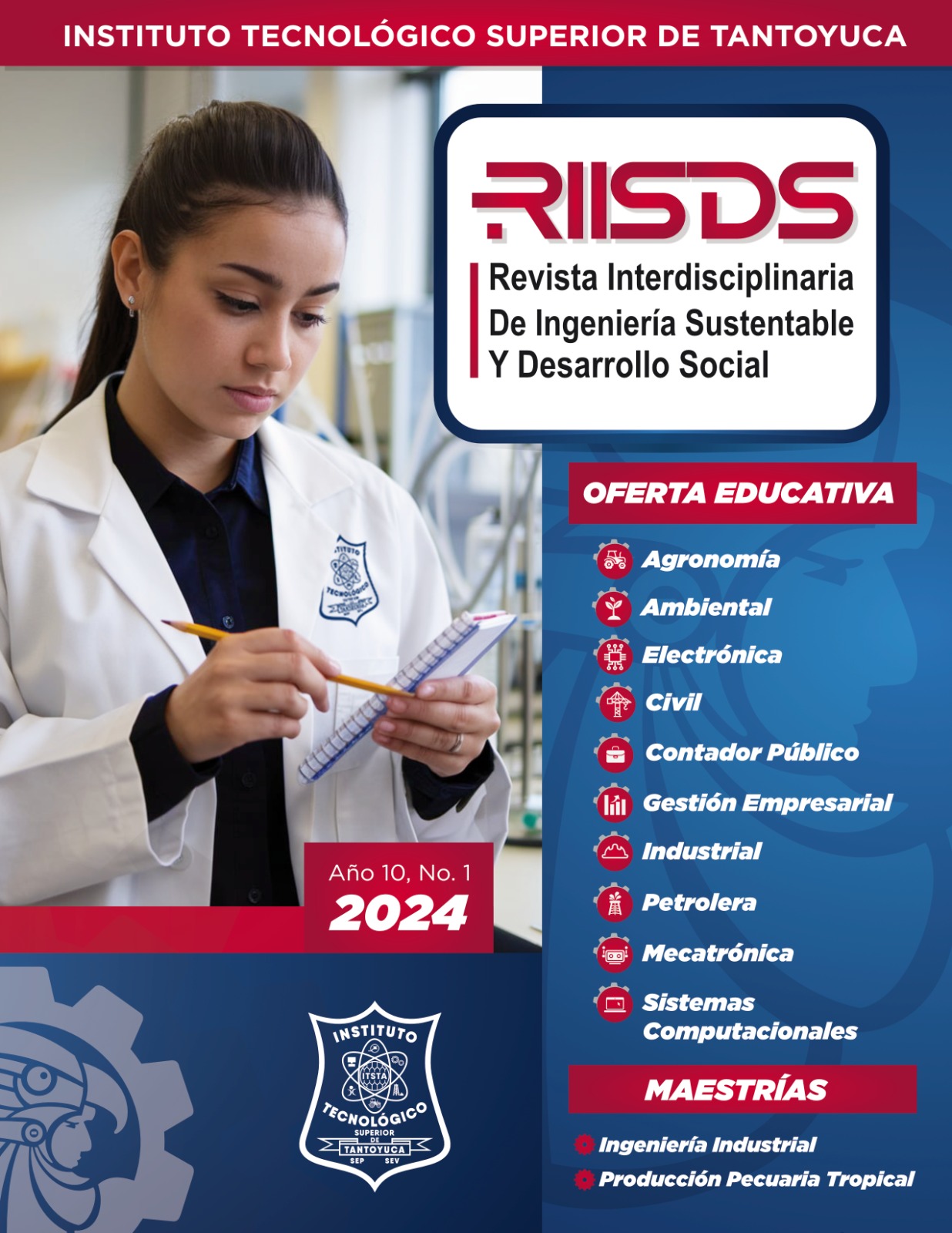Diseño y desarrollo de una órtesis tobillo-pie (AFO) mediante impresión 3D
DOI:
https://doi.org/10.63728/riisds.v10i1.45Palabras clave:
órtesis, modelado 3D, impresión 3DResumen
El estudio detalla la evolución histórica de las órtesis, desde sus orígenes rudimentarios hasta los avances modernos. El objetivo principal es el diseño y desarrollo de una órtesis de tobillo-pie, utilizando tecnología de impresión 3D. Este prototipo brinda al paciente estabilidad, movilidad, comodidad, mejorando la funcionalidad de tobillos-pies del paciente, disminuyendo el riesgo de fracturas y en forma general a mejorar su calidad de vida. La metodología incluye las fases de determinación de requerimientos, modelado 3D, construcción de prototipos, pruebas, ajustes e implementación. Como resultado se presentan se presenta el diseño y desarrollo de la órtesis, así como los materiales, impresora 3D y software utilizado, de tal manera que los médicos o autores puedan replicarlo o reproducirlo. Se concluye que las órtesis desarrolladas en impresoras 3D, garantiza una adaptación personalizada a la anatomía del paciente, con un enfoque en ergonomía, precisión y comodidad.
Citas
Aboutorabi, A., Arazpour, M., Ahmadi Bani, M., Saeedi, H., & Head, J. (2017). Efficacy of ankle foot orthoses types on walking in children with cerebral palsy: A systematic review. Ann. Phys. Rehabil. Med., 60, 393–402. https://doi.org/10.1016/j.rehab.2017.05.004
Attaran, M. (2017). The rise of 3-D printing: The advantages of additive manufacturing over traditional manufacturing. Bus. Horiz, 60, 677–688. https://doi.org/10.1016/j.bushor.2017.05.011
Autti-Rämö, I., Suoranta, J., Anttila, H., Malmivaara, A., & Mäkelä, M. (2006). Effectiveness of upper and lower limb casting and orthoses in children with cerebral palsy: An overview of review articles. Am. J. Phys. Med. Rehabil., 85, 89–103. https://journals.lww.com/ajpmr/abstract/2006/01000/effectiveness_of_upper_and_lower_limb_casting_and.13.aspx
Cano-Vicent, A., Tambuwala, M., Hassan, S., Barh, D., Aljabali, A., Birkett, M., . . . Serrano-Aroca, Á. (2021). Fused Deposition Modelling: Current Status, Methodology, Applications and Future Prospects. Addit. Manuf., 47(102378). https://doi.org/10.1016/j.addma.2021.102378
Choo, Y., Boudier-Revéret, M., & Chang, M. (2020). 3D printing technology applied to orthosis manufacturing: narrative review. Ann. Palliat. Med., 9, 4262–4270. https://doi.org/10.21037/apm-20-1185
Daryabor, A., Arazpour, M., & Aminian, G. (2018). Effect of Different Designs of Ankle-Foot Orthoses on Gait in Patients with Stroke: A Systematic Review. Gait Posture, 62, 268–279. https://doi.org/10.1016/j.gaitpost.2018.03.026
Figueiredo, E., Ferreira, G., Maia Moreira, R., Kirkwood, R., & Fetters, L. (2008). Efficacy of Ankle-Foot Orthoses on Gait of Children with Cerebral Palsy: Systematic Review of Literature. Pediatr. Phys., 20, 207–223. https://journals.lww.com/pedpt/abstract/2008/02030/efficacy_of_ankle_foot_orthoses_on_gait_of.2.aspx
Firouzeh, P., Sonnenberg, L., Morris, C., & Pritchard-Wiart, L. (2021). Ankle foot orthoses for young children with cerebral palsy: A scoping review. Disabil. Rehabil, 43, 726–738. https://doi.org/10.1080/09638288.2019.1631394
Galli, K., & Pelozo, S. (25 de 12 de 2017). Órtesis y Prótesis. Auditoría médica.
Hull, C. (s.f.). 3D Systems Engineering Company. Retrieved 30 de 08 de 2024, from https://es.3dsystems.com/quickparts/learning-center/what-is-stl-file#:~:text=El%20formato%20de%20archivo%20STL,un%20modelo%20s%C3%B3lido%20con%20tri%C3%A1ngulos.
Jandyal, A., Chaturvedi, I., Wazir, I., Raina, A., & Ul Haq, M. (2022). 3D Printing—A Review of Processes, Materials and Applications in Industry 4.0. Sustain. . Oper. Comput., 3, 33–42. https://doi.org/10.1016/j.susoc.2021.09.004
Keller, M., Guebeli, A., Thieringer, F., & Honigmann, P. (2021). In-hospital professional production of patient-specific 3D-printed devices for hand and wrist rehabilitation. Hand Surg.Rehabil, 40, 126–133. https://doi.org/10.1016/j.hansur.2020.10.016
Mazzoli, A., Maida, L., Iasilli, G., & Aversa, A. (2020). 3D printing processes for materials and devices: Some major examples and trends in the medical field and related applications. Materials, 13(3), 575.
Morris, C., Bowers, R., Ross, K., Stevens, P., & Phillips, D. (2011). Orthotic management of cerebral palsy: Recommendations from a consensus conference. NeuroRehabilitation, 28, 37–46.
Ngo, T., Kashani, A., Imbalzano, G., Nguyen, K., & Hui, D. (2018). Additive manufacturing (3D printing): A review of materials, methods, applications and challenges. Compos. Parte B Eng., 143, 172–196. https://doi.org/10.1016/j.compositesb.2018.02.012
Ofluoğlu, D. B. (2009). Orthotic management in cerebral palsy. Acta Orthop. Traumatismo., 43, 165-172. https://doi.org/10.3944/AOTT.2009.165
Oud, T., Lazzari, E., Gijsbers, H., Gobbo, M., Nollet, F., & Brehm, M. (2021). Effectiveness of 3D-printed orthoses for traumatic and chronic hand conditions: A scoping review. PLoS ONE, 16(e0260271). https://doi.org/10.1371/journal.pone.0260271
Raj, R., Dixit, A., Łukaszewski, K., Wichniarek, R., Rybarczyk, J., Kuczko, W., & Górski, F. (2022). Numerical and Experimental Mechanical Analysis of Additively Manufactured Ankle–Foot Orthoses. . Materials, 15(6130). https://doi.org/10.3390/ma15176130
Tardieu, C., Lespargot, A., Tabary, C., & Bret, M. (1988). For how long must the soleus muscle be stretched each day to prevent contracture? . Dev. Med. Child Neurol. , 30, 3–10. https://doi.org/10.1111/j.1469-8749.1988.tb04720.x
Vafadar, A., Guzzomi, F., Rassau, A., & Hayward, K. (2021). Advances in Metal Additive Manufacturing: A Review of Common Processes, Industrial Applications, and Current Challenges. Appl. Sci., 11, 1213. https://doi.org/10.3390/app11031213
Wohlers, T. (2019). 3D Printing and Additive Manufacturing State of the Industry Annual .
Wright, E., & DiBello, S. (2020). Principles of Ankle-Foot Orthosis Prescription in Ambulatory Bilateral Cerebral Palsy. Phys. Med. Rehabil. Clin. N. Am., 31, 69–89. https://doi.org/10.1016/j.pmr.2019.09.007
Zolfagharian, A., Kouzani, A., Khoo, S., Moghadam, A., Gibson, I., & Kaynak, A. (2016). Evolution of 3D printed soft actuators. Sens. Actuators A Phys., 250, 258–272. https://doi.org/10.1016/j.sna.2016.09.028
Descargas
Publicado
Cómo citar
Número
Sección
Licencia
Derechos de autor 2025 RIISDS. Revista interdisciplinaria de ingeniería sustentable y desarrollo social

Esta obra está bajo una licencia internacional Creative Commons Atribución 4.0.




